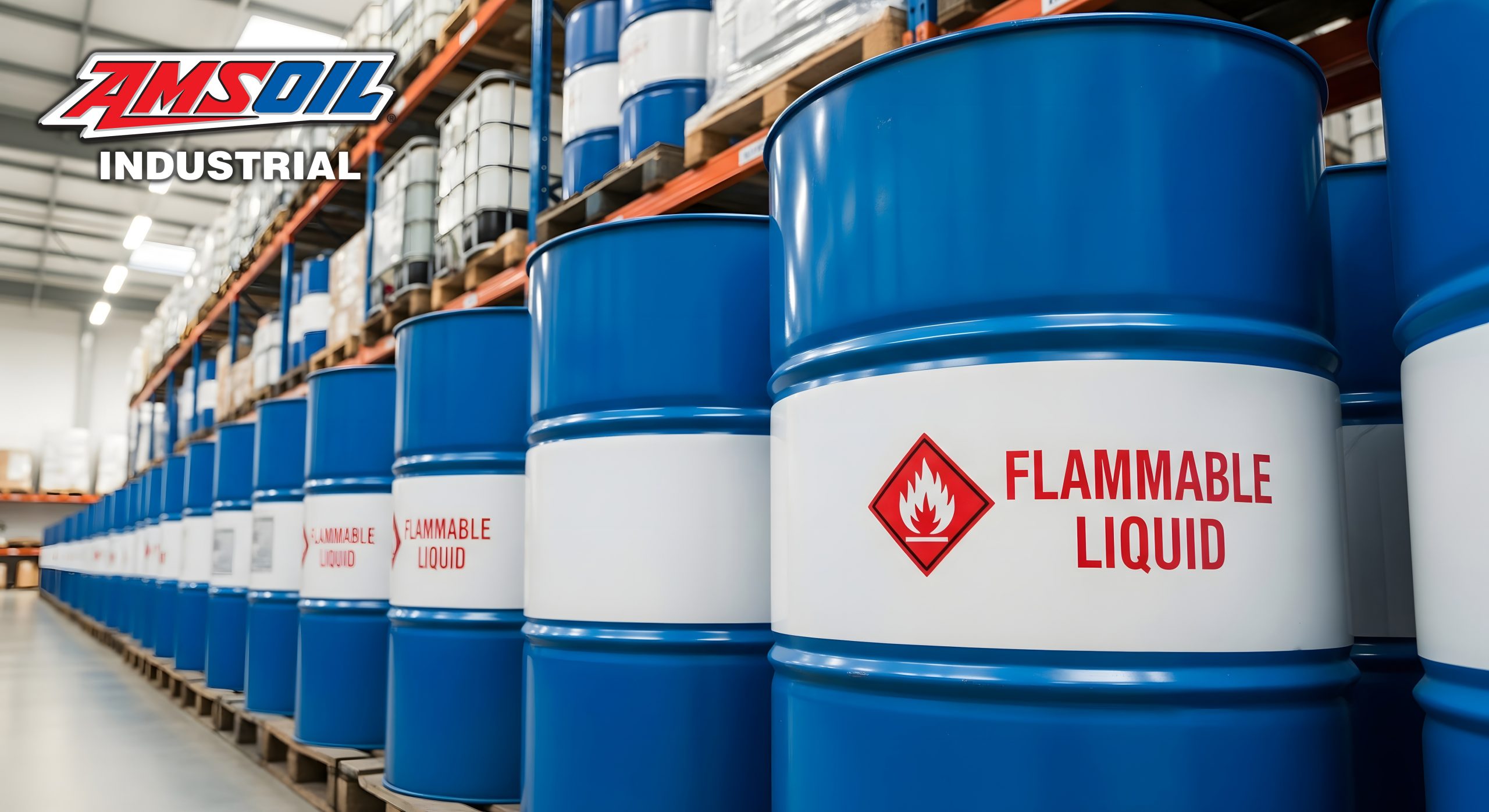Best Practices for Safely Storing, Using and Monitoring Oil-Based Fluids
Straight oils offer superior lubrication compared to water-based alternatives, making them highly effective for cutting and grinding applications. Whether petroleum- or synthetic-based, straight oils help reduce friction, minimize tool wear and improve the efficiency of machining processes; however, they also increase fire-safety concerns due to their flammable properties. Establishing regular safety training, proper storage and handling protocols and adherence to industry guidelines can help ensure a safe working environment while maximizing the benefits of using straight oils.
Why Fire Safety Matters with Straight Oils
Straight oils typically have a flash point (the temperature at which they can ignite when exposed to an open flame) ranging from approximately 180°F (82°C) to over 400°F (204°C), depending on the base oil and formulation. While their flash points are generally higher than many other flammable liquids, the risk of fire cannot be ignored, especially in metalworking areas with sparks, hot surfaces or electrical equipment.
Best Practices for Safe Storage
• Store in Approved Containers: Use containers designed for flammable liquids and clearly label them. Ensure lids are tightly sealed to minimize evaporation and reduce fire hazard.
• Keep Away from Ignition Sources: Store oils away from open flames, hot surfaces, electrical panels and welding or grinding operations.
• Maintain Proper Ventilation: Good airflow reduces the accumulation of flammable vapors. Avoid storing oils in confined spaces.
• Use Secondary Containment: Prevent spills from spreading by storing containers on spill pallets or containment trays.
• Limit Quantities: Store only the necessary amount of straight oil in the work area to reduce fire load.
Handling Guidelines to Reduce Fire Risk
• Minimize Exposure to Sparks: Sparks from grinding wheels, welding or electrical equipment can ignite oil mist or spills. Use guards, shields and proper PPE.
• Control Oil Mist and Smoke: Oil-based fluids can aerosolize during machining, creating mist that is both a fire hazard and health concern. Use mist collectors and ventilation systems to capture airborne oil particles.
• Avoid Hot Work Near Oil: Schedule welding or grinding tasks away from oil reservoirs and delivery lines. If hot work is necessary, remove or isolate flammable materials and have fire extinguishers on hand.
• Monitor Temperature: Avoid overheating oil sumps or lines; high temperatures can lower flash points and increase fire risk.
Spill and Leak Prevention
• Routine Inspection: Regularly check tanks, sumps, pumps and hoses for leaks or damage. Promptly repair or replace faulty equipment.
• Clean Spills Immediately: Use absorbent materials and follow proper disposal procedures to eliminate slip and fire hazards.
• Train Employees: Ensure workers understand proper spill response, cleanup procedures and emergency protocols.
Fire Suppression and Emergency Preparedness
• Install Suitable Fire Extinguishers: Class B extinguishers, designed for flammable liquids, should be readily available near machining and storage areas.
• Develop Emergency Plans: Establish and communicate clear fire-response procedures, including evacuation routes and who to contact.
• Conduct Regular Drills: Practice fire drills and review safety protocols to ensure readiness.
• Consider Automatic Systems: For high-volume or high-risk operations, automatic fire suppression or deluge systems may be warranted.
Our Commitment to Safety
AMSOIL Industrial straight oils are engineered with high flash points (250°F is our lowest and 470°F is our highest) and enhanced with additives to minimize misting and smoke, effectively reducing fire risks. However, implementing best practices for storage, usage, spill management and emergency preparedness is essential to ensure workforce safety, protect your facility and support your bottom line.
Need help selecting safer, high-performance straight oils?
Contact an AMSOIL Industrial Application Engineer today.
